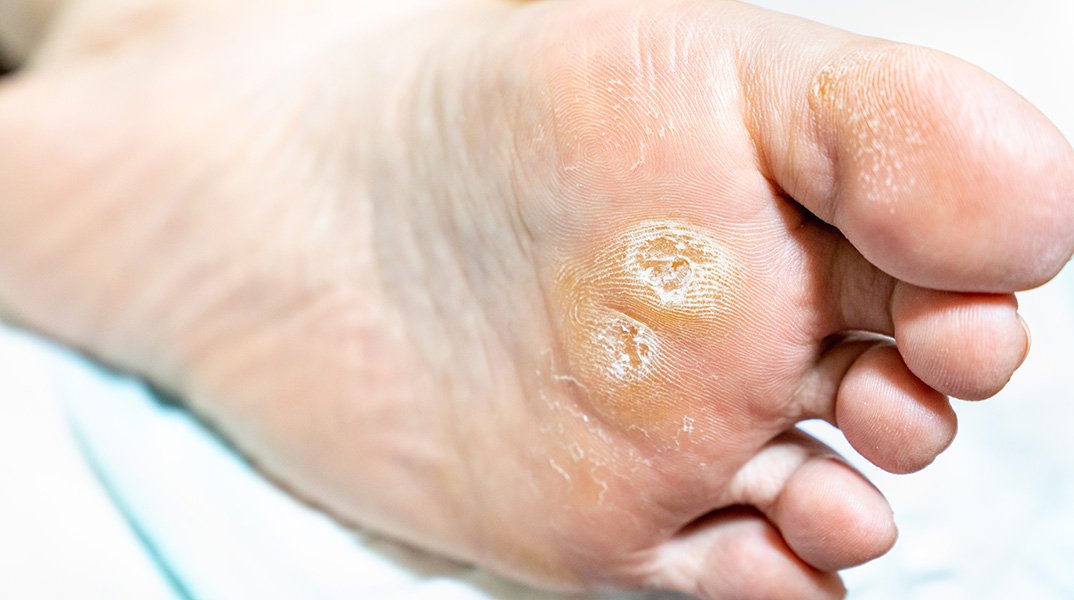By Deborah Jeanne Sergeant
Without any warning, you suddenly experience a sharp pain on the bottom of your foot.
Upon examination, you discover a corn: a small, deep formation of dry skin with a hard center surrounded by swollen skin.
Although a corn is deeper than a callous and more likely to cause pain, friction causes both of them to form.
People should seek help from someone experienced in caring for corns, especially if they are immunocompromised, diabetic or have peripheral neuropathy or peripheral vascular disease, according to Ryan D’Amico, podiatrist and founder and co-owner of Syracuse Podiatry.
“I’ve seen them treat at home and come in with a raging infection,” he said.
Corn removal pads from drugstores typically contain salicylic acid to burn off the dead skin but D’Amico warned that these can go too deep and harm healthy skin along with removing the corn. It’s also likely that the pads won’t entirely remove the corn. A professional such as a podiatrist can remove the corn manually without damaging the healthy tissue near the growth.
“Remove the source of the corn,” D’Amico said. “Otherwise, It won’t be affective. You’re spitting in the wind and it will come back.”
He explained that like a callus, a corn is a normal response from the skin to protect against damage to that area that is being compressed. But unlike most calluses, corns can form very painful, pointed structures that poke at the tender skin underneath.
Ill-fitting and worn-out footwear is nearly always to blame for corns. Many people keep wearing shoes as long as the uppers look good but worn soles and overall tight fit can cause corns and other problems. Some wear the same pair of shoes every day. Alternating among a few pairs can help reduce the risk of corns since each pair fits slightly differently.
Replace shoes more frequently and ensure the new ones fit right. Check to see if the shoe slips on the heel and if it is tight against the toes. Good-fitting shoes should feel secure on the heel and allow room for toes to move.
“Go to a place that will fit you like Fleet Feet where they’ll spend some time assessing your feet,” said Douglas Dickson, podiatrist and owner of Oswego-Fulton Foot Care. “A lot of shoe stores don’t sell service. Go to a full-service shoe store. As long as the friction continues, they’ll keep coming back.”
Synthetic materials in socks prevent the feet from breathing and trap moisture against the skin. That contributes to friction, as do seams. Look for socks with minimal seams.
Because Dickson uses sharp instruments to shave off corns, he advises against their home treatment. It’s easy to go too deep. The sharp tools are tricky to use right and corn pads can cause chemical burns.
“If it keeps coming back, we can do surgery,” Dickson added.

